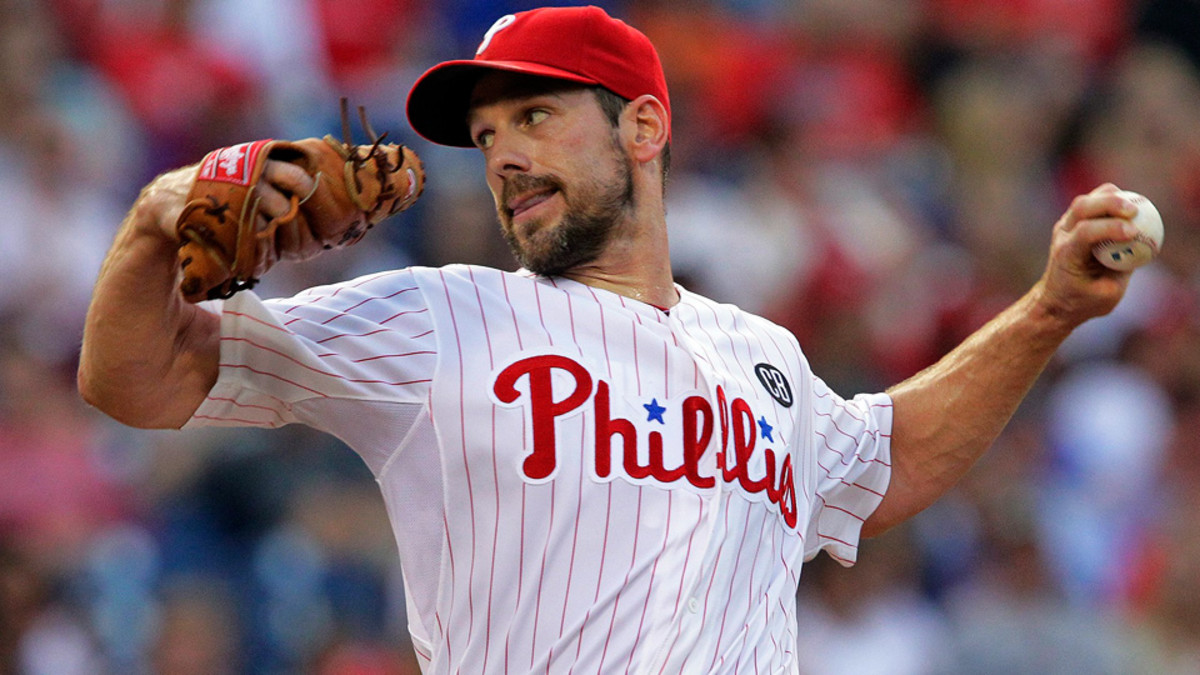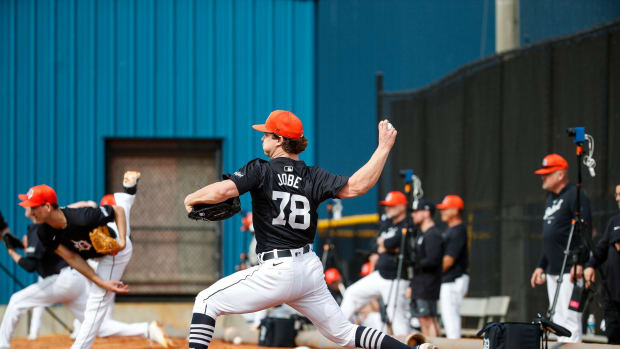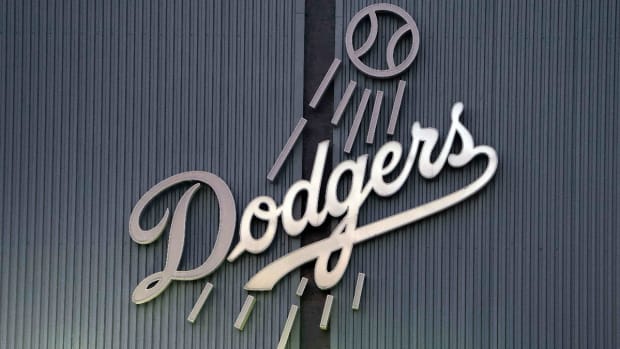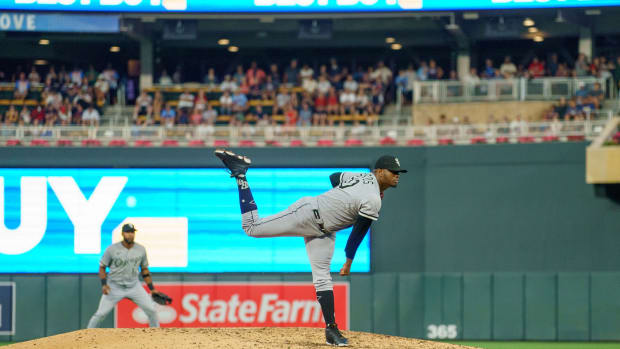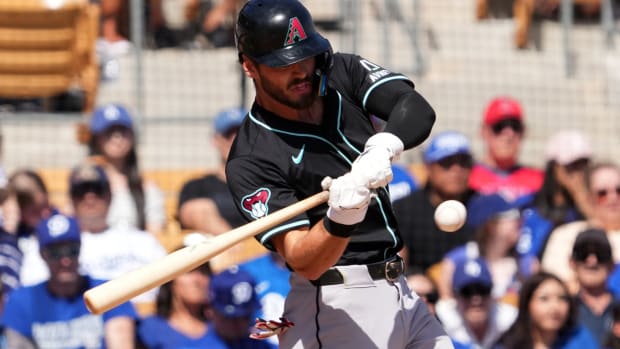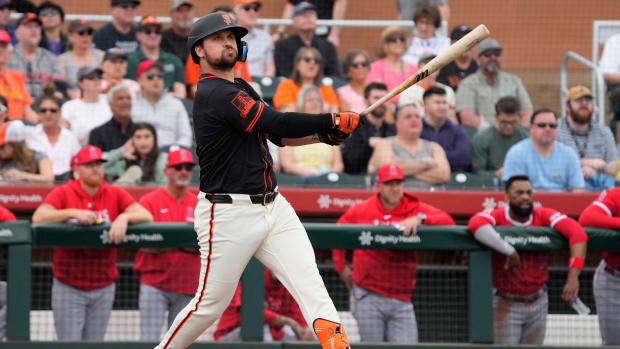Starting pitching market thin ahead of MLB trade deadline
The non-waiver trade deadline is a week from Thursday, and with Jeff Samardzija, Jason Hammel and Brandon McCarthy having already been dealt, and Cliff Lee getting roughed up in his return from the disabled list Monday night, the market for starting pitching is thin. Here’s a look at the latest rumors surrounding some of the highest-profile pitchers believed to be on the trading block, ranked in order of their potential impact:
David Price, LHP, Rays
Price has been the most-discussed starting pitching trade target since last fall, and the Rays’ poor start and early-June swoon made it seem like a deal was inevitable. However, Tampa Bay has gone 23-11 since June 11, trimming seven games off its deficit in the American League East in just six weeks. A popular pick to win the division in March, the Rays are starting to believe they can climb all the way back into contention in their weak division and may thus decide to be buyers rather than sellers at this year’s deadline. As Peter Gammons told WEEI on Monday, the Mariners “thought they were very close to a deal for Ben Zobrist and they said the Rays pulled back the last couple of days because they want to take it right down to the last 48 hours before the deadline.”
There’s no particular urgency for Tampa Bay to move the 28-year-old Price, who won’t be a free agent until after the 2015 season. Still, his trade value may never be higher, because a team acquiring him now would have the four-time All-Star and 2012 AL Cy Young award winner for not one but two pennant races. But any team looking to acquire Price, who has posted a 1.72 ERA over his last 10 starts and leads the majors in strikeouts and innings pitched, would have to build a package around blue-chip talent comparable to what the Athletics gave up for Samardzija and Hammel. In that deal, Oakland sent the Cubs shortstop Addison Russell, who was rated the seventh-best prospect in the game by Baseball Prospectus last March, and fellow first-round pick Billy McKinney, as well as starting pitcher Dan Straily and a player to be named later. The cost for Price may be even higher, making a trade even less likely.
Which National League teams are buying or selling ahead of deadline?
Cliff Lee, LHP, Phillies
Lee returned Monday night from a two-month absence due to a flexor pronator strain in his pitching arm and gave up six runs in 5 2/3 innings against the Giants, striking out just three and displaying his lowest velocity of the season. But it wouldn’t be inappropriate to chalk all of that up to rust; Lee threw just 10 2/3 innings across three minor league rehab starts before being activated and is thus in a stage similar to being in the middle of spring training.
Regardless of his health, Lee comes with a fairly hefty price tag. As Yahoo Sports’ Tim Brown reported on Monday, “According to sources appraised of [Phillies general manager Ruben] Amaro's hopes and dreams, the Phillies would expect a team to take on Lee's entire contract.” Lee will make $25 million next season and has a $27.5 million club option for '16, with a hefty buyout of $12.5 million. Add the prorated portion of his $25 million salary for this season, and that would put a team acquiring Lee on the hook for almost $46 million. All that buys a team is 1 1/3 seasons of a 35-year-old pitcher who has yet to prove his arm is fully healthy.
Complicating matters even further, Lee has a partial no-trade clause that allows him to block deals to 20 teams. Per ESPN’s Jerry Crasnick, the clubs Lee has approved are the Astros, Braves, Indians, Marlins, Mets, Nationals, Padres, Rays, and Twins, nine teams that either aren’t in contention, don’t need him or can’t afford him. Brown speculates that Lee could waive his no-trade clause if the team in question picks up his 2016 option, which would add another $15 million of commitment for Lee’s age-37 season. That brings the total price tag up to almost $61 million for 2 1/3 seasons.
Bartolo Colon, RHP, Mets
Another pitcher who can be had far easier than Price or Lee is Colon, who was an All-Star last season and has recovered from a rough start to this campaign to post a 3.03 ERA over his last 11 starts for the Mets, a good match for the 2.99 ERA he posted in Oakland over the last two years. Like Price and Lee, Colon is under contract for 2015, but at a relatively affordable $11 million. The caveat, of course, is that Colon is 41 and in terrible physical shape. Close observers will also note that his velocity has decreased a bit this season and has continued to erode, however gradually, as the season has progressed. That may be one reason why the market for Colon has been slow thus far. Still, while Colon continues to be a gamble, he is one with relatively modest stakes.
Ian Kennedy, RHP, Padres
Kennedy — who is not due to become a free agent until after the 2015 season — has bounced back nicely from his lousy 2013 season, which saw him dealt to San Diego at the deadline by the Diamondbacks for a pair of unexceptional relievers. With the Padres blowing things up (thus far they have fired their general manager and traded their closer), Kennedy could be the next to go, and at 29 he could be considered a potential long-term solution. Kennedy’s new team could very well sign him to an extension, raising his potential value significantly. Indeed, the Angels, who acquired closer Huston Street from San Diego on Friday, were said to have inquired about Kennedy as well, but its ability to add both pitchers was likely limited by its lack of minor league depth. Of course, the Padres could opt to sign Kennedy to an extension themselves. That seems unlikely, but the possibility makes Kennedy a rotation target who could be inexpensive in terms of dollars (he’s making just $6.1 million this year in his penultimate year of arbitration) but costly in terms of prospects.
Jake Peavy, RHP, Red Sox
Peavy is the fourth former Cy Young award winner on this list, and the one starting pitcher the Red Sox, who have won eight of their last nine and are a half-game ahead of the Rays in the standings, seem willing to part with. There’s good reason for that. Though just 33, Peavy appears to be well into his decline. He was a deserving All-Star for the White Sox two years ago, but his walk and home run rates have increased in each of the last three seasons while his strikeout rate has decreased in each of the last two. The result is a pitcher who this season has posted a weak 2.16 strikeout-to-walk ratio while allowing home runs over 50 percent more often than league average.
Those stats have translated to an 86 ERA+ and an ERA of 4.59 that is actually lower than his Fielding Independent Pitching mark of 4.72. And just to make things clear to the luddites for whom Peavy’s name still outshines those advanced statistics, he’s 1-8 on the season. Despite those numbers, there still may be teams interested in rolling the dice on the former ace, given that Peavy is in the final guaranteed year of his contract and he won’t reach the innings total required for his 2015 option to vest. The Cardinals, for example, continue to be mentioned in connection with him.
However, there is a far more compelling option in Boston's rotation: John Lackey. He has been very good since returning from Tommy John surgery last year, and that surgery triggered a clause in his contract that gave the Red Sox a 2015 option on him at the league minimum. Boston has said that it intends to keep Lackey, and it could rather easily leverage that league-minimum extension into a team-friendly two-year deal if it wants to allow the pitcher to save some face. However, Lackey is 35 and has reached 30 starts or 200 innings just once in the last six seasons, that coming way back in 2010. Trading him wouldn’t be the worst idea for a team that is five games below .500.
Lackey would seem to have significant trade value, given the quality of his pitching this season and last (112 ERA+, 4.01 K/BB), his extensive and generally impressive postseason experience (19 games, 17 starts, 3.03 ERA) and that league-minimum option. He could bring the Red Sox even more than the Phillies could expect in exchange for fellow 35-year-old Lee, especially with Philadelphia’s focus on salary relief.






























